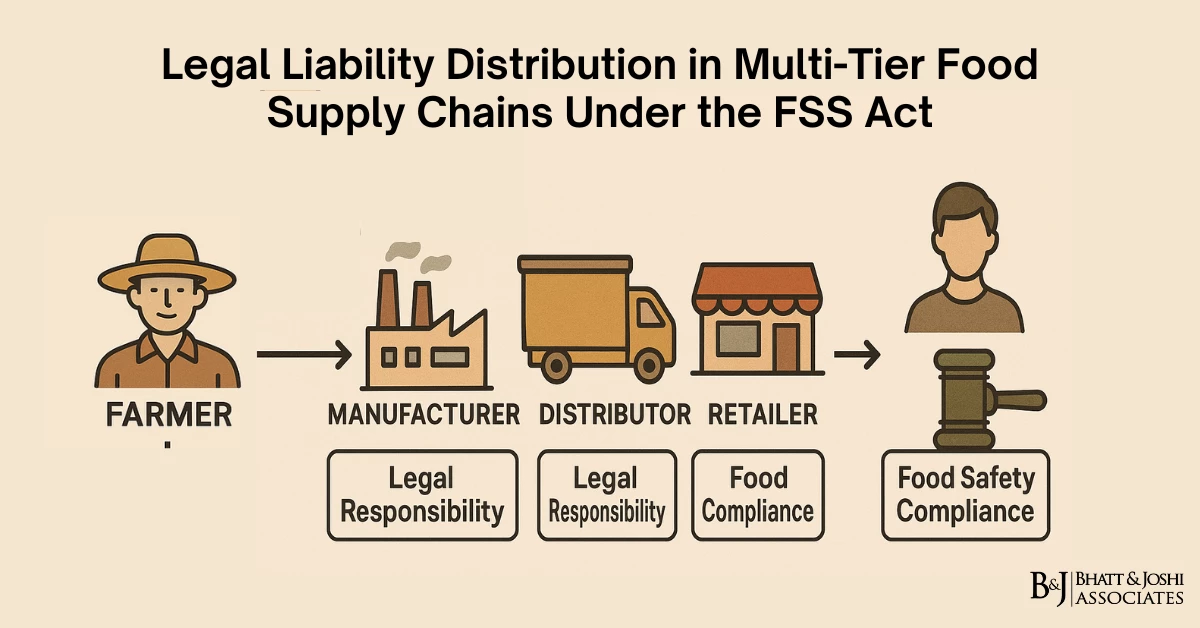I. Introduction
On May 3, 2025, the Supreme Court of India entered uncharted constitutional territory by conducting a review of The Arbitration Bill 2024 while it remained pending in Parliament. Justice Pardiwala, delivering the Court’s observations, flagged “procedural gaps” in the draft legislation and directed the Law Ministry to undertake revisions before the bill’s enactment. This unprecedented judicial foray into pre-enactment scrutiny represents a significant expansion of the Court’s review powers and raises profound questions about the evolving relationship between India’s judiciary and legislature. The intervention is particularly noteworthy given that the same bench had previously set a three-month deadline for presidential assent to bills, creating a framework for expedited legislative processes that now appears to include substantive judicial input before enactment.
This article examines the constitutional foundations, implications, and potential consequences of this landmark development. It evaluates whether this intervention constitutes legitimate judicial oversight or represents concerning judicial overreach. Through analysis of the Court’s reasoning, constitutional principles, and comparative perspectives, this article seeks to contextualize and assess this jurisprudential innovation within India’s constitutional democracy.
II. Constitutional Framework for Pre-Enactment Judicial Review in India
A. Historical Boundaries of Judicial Review in India
The power of judicial review in India derives primarily from Articles 13, 32, 226, and 227 of the Constitution. Article 13(2) explicitly states that “the State shall not make any law which takes away or abridges the rights conferred by this Part and any law made in contravention of this clause shall, to the extent of the contravention, be void.” This provision has traditionally been interpreted to apply to laws after enactment, not during their formative stages in Parliament.
In I.R. Coelho v. State of Tamil Nadu (2007), the Supreme Court reaffirmed that judicial review is “an integral part of the constitutional scheme” and a “basic feature” of the Constitution. However, the Court has historically exercised this power with restraint regarding pending legislation. As Justice Krishna Iyer noted in State of Rajasthan v. Union of India (1977), “The Court will not rush in where even lawmakers fear to tread.”
This traditional judicial restraint stems from the fundamental principle of separation of powers articulated in the landmark Kesavananda Bharati v. State of Kerala (1973) judgment, where the Court recognized that while the Constitution grants it significant review powers, these powers must be exercised without encroaching upon the legislative prerogative to draft, debate, and enact laws through democratic processes.
B. Comparative Perspectives on Pre-Enactment Scrutiny
India’s constitutional approach has primarily followed the American model of post-enactment judicial review rather than the European model of abstract review. However, several jurisdictions offer instructive comparative perspectives on pre-enactment scrutiny.
France’s Constitutional Council conducts mandatory review of organic laws and optional review of ordinary legislation before promulgation. Germany’s Federal Constitutional Court can engage in abstract review of legislation upon request by federal or state governments or parliamentary minorities. South Africa’s Constitution explicitly permits the President to refer a Bill to the Constitutional Court for a decision on its constitutionality before signing it.
Unlike these formal mechanisms, India’s Constitution does not explicitly authorize pre-enactment judicial review. The Supreme Court’s intervention in the Arbitration Bill thus represents a novel extension of its powers, bringing India closer to the European model without the corresponding constitutional authorization.
III. The Arbitration Bill 2024: Context and Controversy
A. Legislative Intent and Key Provisions
The Arbitration Bill 2024 represents the culmination of India’s efforts to establish itself as a global arbitration hub. Following the amendments to the Arbitration and Conciliation Act in 2015, 2019, and 2021, this comprehensive legislation aims to consolidate reforms and address persistent challenges in India’s arbitration landscape.
The Bill’s key provisions include:
- Establishment of an independent Arbitration Council of India to grade arbitral institutions
- Introduction of streamlined procedures for emergency arbitration
- Provisions to limit judicial intervention in arbitral proceedings
- Framework for third-party funding in arbitration
- Enhanced enforcement mechanisms for arbitral awards
These measures represent Parliament’s response to concerns about delays, costs, and judicial interference that have historically undermined the efficacy of arbitration in India. The Bill emerged from extensive stakeholder consultations, including input from the Law Commission, arbitration practitioners, and industry representatives.
B. Procedural Gaps Identified by Justice Pardiwala
Justice Pardiwala’s critique focused on several procedural deficiencies in the Bill. While the specific details remain limited in public reporting, the identified gaps reportedly include:
- Insufficient provisions for arbitrator independence and impartiality
- Ambiguous standards for setting aside awards on public policy grounds
- Inadequate procedural safeguards for foreign parties
- Overlapping jurisdiction between the Arbitration Council and existing regulatory bodies
- Lack of clarity regarding the retrospective application of certain provisions
Justice Pardiwala characterized these as “structural flaws” rather than mere drafting issues, suggesting they undermined the Bill’s core objectives. His directive to the Law Ministry emphasized that addressing these gaps was essential to ensuring the legislation’s constitutional validity and practical effectiveness.
IV. Analysis of the Court’s Intervention
A. Constitutional Implications and Separation of Powers
The Court’s unprecedented review raises serious questions about separation of powers. Article 50 of the Constitution directs the State to “take steps to separate the judiciary from the executive,” but remains silent on judicial-legislative boundaries. The Constituent Assembly debates reveal an implicit understanding that each branch would respect the others’ domains while exercising necessary checks and balances.
This intervention during the review of the Arbitration Bill 2024 potentially shifts this delicate balance. By scrutinizing legislation before Parliament completes its deliberative process, the Court positions itself not merely as a constitutional guardian but as an active participant in lawmaking. This approach contradicts Justice P.N. Bhagwati’s observation in S.P. Gupta v. Union of India (1981) that “the doctrine of separation of powers has never been recognized in a strict sense” but “the functions of the different branches of government have been sufficiently differentiated.”
The Court’s action could be viewed as usurping Parliament’s constitutional prerogative under Articles 107-111 to debate, amend, and enact legislation. Conversely, proponents might argue that the intervention represents a natural evolution of judicial review in response to contemporary governance challenges, protecting constitutional principles before they are potentially violated.
B. Judicial Rationale and Public Interest Considerations
The Court’s reasoning appears to rest on a preventive approach to constitutional protection. Rather than waiting for the legislation to be enacted and potentially challenged—thus creating legal uncertainty and practical difficulties—the Court has chosen to address issues proactively.
This preventive approach finds some support in jurisprudential principles articulated in State of Madras v. V.G. Row (1952), where Chief Justice Patanjali Sastri noted that the Court must be vigilant in preserving constitutional rights. However, that vigilance has traditionally been exercised post-enactment, not during the legislative process.
The public interest considerations are substantial. Arbitration reform is crucial to India’s economic goals, including improving its ease of doing business ranking and attracting foreign investment. The Court may have determined that flawed arbitration legislation would harm these interests more than a delay for reconsideration would. This balancing of immediacy against quality illustrates the complex calculations involved in judicial intervention in the legislative sphere.
V. Impact on Legislative Processes
A. Parliamentary Sovereignty and Judicial Oversight
The Court’s review of pending legislation potentially establishes a precedent for broadened judicial oversight of the legislative process. This expansion could fundamentally alter Parliament’s functioning, requiring legislators to anticipate judicial scrutiny not only after enactment but during the drafting and debate stages.
Parliamentary sovereignty, while not absolute in India’s constitutional scheme, has traditionally included the legislature’s freedom to deliberate and draft laws without direct judicial involvement. The Court’s intervention potentially modifies this understanding, suggesting that Parliament’s lawmaking function is now subject to more extensive judicial supervision.
The intervention raises practical questions about implementation. Will the Law Ministry simply incorporate the Court’s suggestions? Will Parliament debate the judicial observations as it would committee recommendations? The answers will shape the practical impact of this precedent on legislative processes.
B. Potential Procedural Reforms in Bill Drafting
The Court’s intervention may catalyze reforms in legislative drafting procedures. If judicial pre-enactment review becomes established, government departments and parliamentary committees may adopt more rigorous constitutional scrutiny processes before bills reach the floor for debate.
This could lead to:
- Enhanced pre-legislative scrutiny by legal experts
- More detailed constitutional memoranda accompanying bills
- Greater involvement of the Attorney General in the drafting process
- Development of formal mechanisms for addressing constitutional concerns during drafting
Such reforms could improve legislative quality but might also extend the already lengthy legislative timeline, potentially delaying urgent reforms. The challenge lies in balancing thoroughness with efficiency in the legislative process.
VI. Future Jurisprudential Trajectories
A. Three-Month Deadline Precedent for Presidential Assent
The same bench’s earlier establishment of a three-month deadline for presidential assent to bills, coupled with this new pre-enactment review power, suggests the Court is constructing a more comprehensive framework for judicial supervision of the legislative process.
This emerging framework appears to address both procedural and substantive aspects of lawmaking: the three-month deadline ensures timely completion of the legislative process, while pre-enactment review seeks to ensure constitutional compliance before implementation. Together, these precedents potentially transform the Court’s role from post-hoc reviewer to active participant in the legislative timeline.
The implications extend beyond arbitration to all significant legislation. Future courts may invoke this precedent to review pending legislation in other areas, particularly those affecting fundamental rights or institutional frameworks.
B. Balancing Democratic Will and Constitutional Principles
The ultimate challenge for courts following this precedent will be balancing respect for democratic processes with protection of constitutional principles. As Justice D.Y. Chandrachud noted in Government of NCT of Delhi v. Union of India (2018), “The Constitution is a charter of governance that envisages a dialectic between democratic governance and constitutional limitations.”
This dialectic becomes more complex when judicial intervention occurs before the democratic process concludes. Courts must demonstrate exceptional restraint to ensure that pre-enactment review supplements rather than supplants parliamentary deliberation. The legitimate boundaries of such review remain undefined, creating uncertainty about when and how courts should exercise this new-found power.
As this jurisprudence develops, clear principles must emerge to guide both Parliament and the judiciary in navigating this transformed relationship. Without such principles, the risk of institutional conflict and constitutional uncertainty remains significant.
VII. Conclusion
The Supreme Court’s unprecedented review of the Arbitration Bill 2024 represents a significant evolution in India’s constitutional jurisprudence. By expanding judicial review to encompass pending legislation, the Court has potentially redrawn the boundaries between judicial and legislative authority.
While this intervention may improve legislative quality and prevent constitutional violations, it raises profound questions about separation of powers and democratic legitimacy. The long-term impact will depend on how the Court articulates the principles governing such review and how Parliament responds to this judicial encroachment.
As this new chapter in Indian constitutional law unfolds, all stakeholders must remain vigilant to ensure that the delicate balance between judicial oversight and legislative autonomy is maintained. The Court’s innovation must be guided by principled restraint to prevent erosion of Parliament’s constitutional role. Only then can pre-enactment judicial review serve as a constructive enhancement rather than a disruptive intrusion into India’s constitutional framework.
VIII. References
- Constituent Assembly Debates, Vol. VII, 1948-1949.
- Kesavananda Bharati v. State of Kerala, (1973) 4 SCC 225.
- I.R. Coelho v. State of Tamil Nadu, (2007) 2 SCC 1.
- State of Rajasthan v. Union of India, (1977) 3 SCC 592.
- S.P. Gupta v. Union of India, 1981 Supp SCC 87.
- State of Madras v. V.G. Row, AIR 1952 SC 196.
- Government of NCT of Delhi v. Union of India, (2018) 8 SCC 501.
- Manohar, Sujata V., “The Evolution of Judicial Review in India: Lessons from Comparative Constitutional Law,” Indian Journal of Constitutional Studies, Vol. 5, 2024.
- Krishnan, Jayanth K., “Globalization of ADR: The Indian Experience with Arbitration Reform,” Georgetown Journal of International Law, Vol. 51, 2023.














